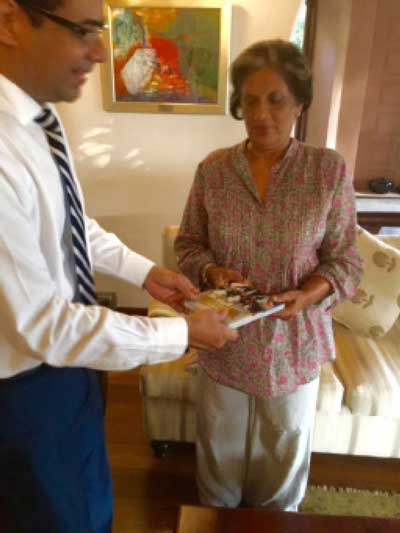Saturday Apr 20, 2024
Saturday Apr 20, 2024
Monday, 8 February 2016 00:00 - - {{hitsCtrl.values.hits}}
 By P. Radhakrishnan - a Former Deputy Minister of Vocational & Technical Training
By P. Radhakrishnan - a Former Deputy Minister of Vocational & Technical Training
The political change that took place on 8 January 2015 was unbelievable. When former President Mahinda Rajapaksa announced early presidential elections hardly anyone believed that he could be defeated.
He had created a winning formula of engineering Sinhalese nationalism on a mass scale by referring to threats to the nation from many fronts that included the country’s own ethnic and religious minorities, the Tamil Diaspora and the Western-led international community. He coupled this with giving unsustainable handouts to the people especially during elections. He had certainly a two-generation plan in mind and an assurance that Ranil Wickremesinghe would be the Opposition candidate and that he could beat him.
In winning the 2010 presidential election by a huge majority, Mahinda Rajapaksa demonstrated that the substantial ethnic and religious minority vote of around 30% could even be disregarded if the Sinhala-Buddhist vote of 70% in bloc could be mobilised in his favour.
This put UNP leader Ranil Wickremesinghe, who did not want to follow the Rajapaksa line of ethnic nationalist politics out of the contest completely. This also meant that the Opposition was doomed to permanent defeat under his leadership. This book by Dinesh Weerakkody is an inside account of how a desperate situation yielded an enlightened and unexpected answer born of lessons learned, team work and, ultimately, a statesmanlike choice of country before self.
Weerakkody’s account shows how Ranil Wickremesinghe finally made the decision to forge an alliance that could pose a credible threat to Rajapaksa’s nationalism and authoritarianism rule. Together with those political leaders who had once been his political opponents, such as SLFP General Secretary Maithripala Sirisena, former President Chandrika Bandaranaike Kumaratunga, Dr. Rajitha Senaratne and JHU leader Ven. Athureliye Rathana, the UNP forged a political alliance that split the all-powerful and hitherto invincible Rajapaksa Government from within.
As one of those who played a key role in bringing the chief protagonists of this political drama together, Weerakkody provides an insider’s view of what transpired during those three months that saw Sri Lanka change from going downhill to ethnic polarisation and authoritarian governance to move back to the centre of liberal democracy is fascinating and therefore would be of interest to all those interested in Sri Lankan politics.
Now the challenge for those who are entrusted with political power, as Weerakkody points out in his book, is to demonstrate the ‘Yahapalanaya’ (Good Governance) which became the winning factor at the 2015 January election by action.
Weerakkody urges both Sirisena and Wickremesinghe to be strong like Lee Kuan Yew against corruption, conflict of interest and nepotism, which even JR failed to subdue, if not now then later, but sooner rather than never.
In addition, he says have a good team in place, another ‘Ronnie de Mel, Ranasinghe Premadasa, Lalith Athulathmudali, Gamini Dissanayake’ combination, not infighting and disunity. A house divided is bound to fall. Build the house on a firm foundation of good governance, in deed as much as in word, and there certainly will not be a repeat of 2004. This book is a must read and must be placed in all leading libraries.